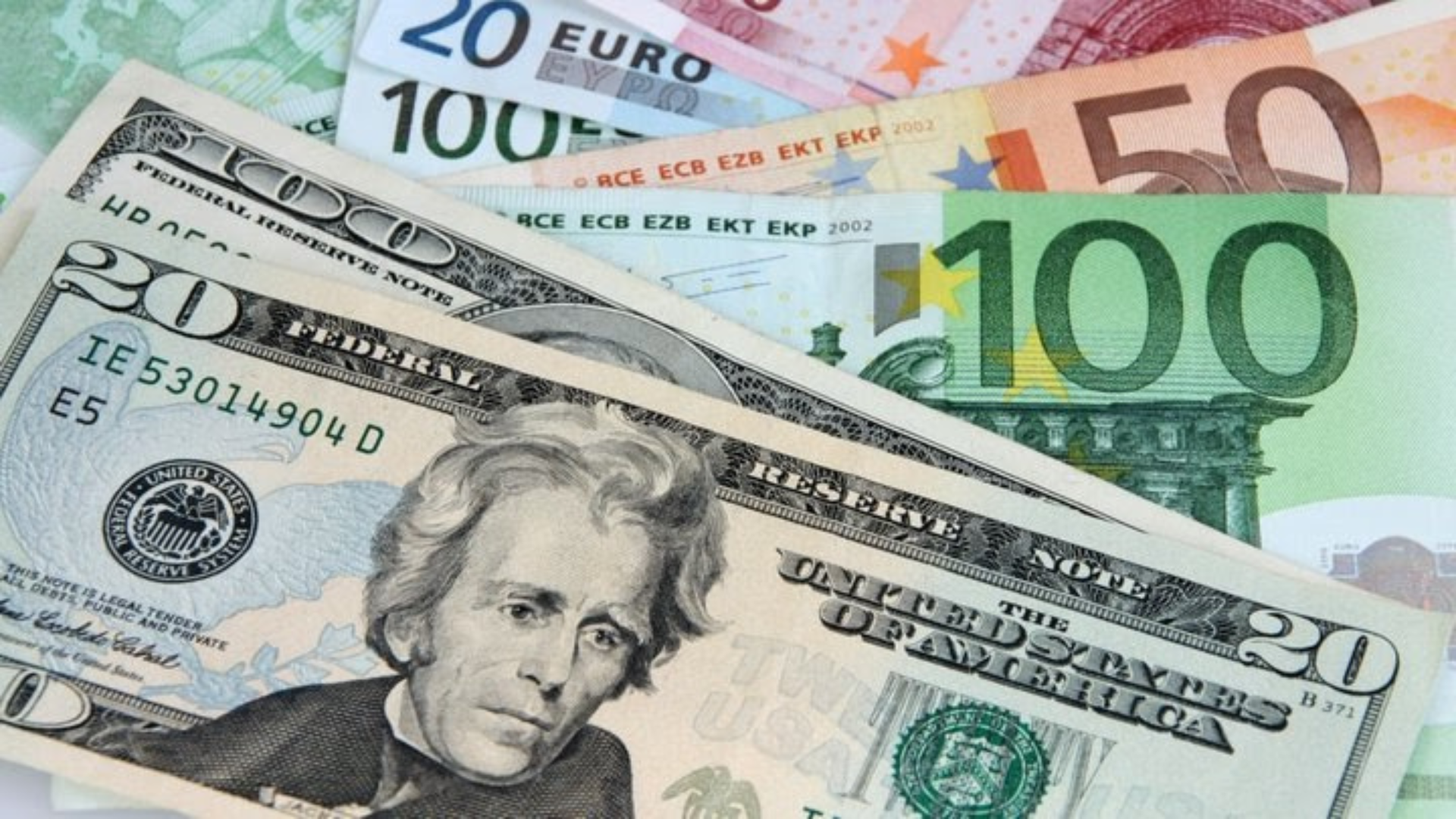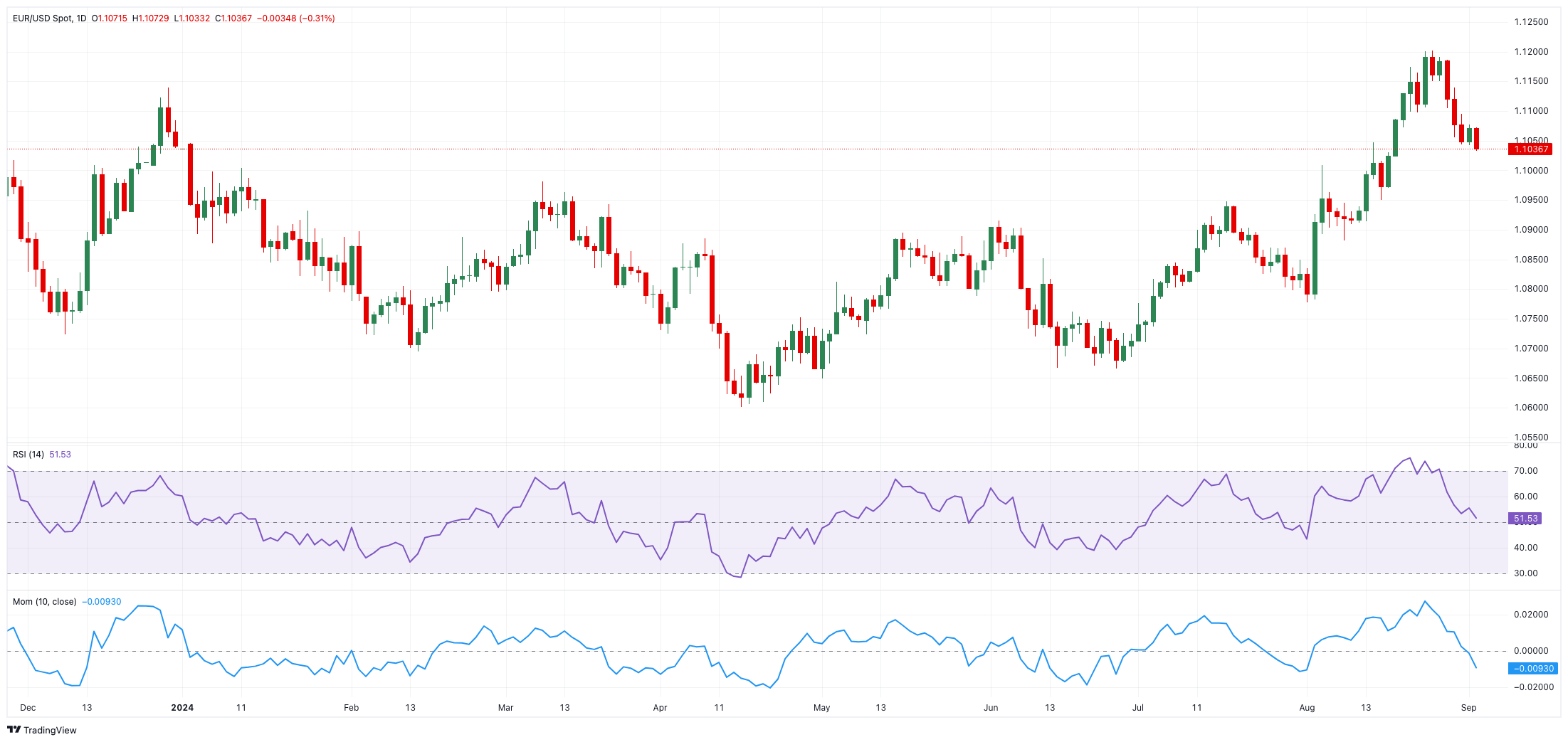
After a strong start to the trading week, EUR/USD faced renewed selling pressure, pushing the pair down to the 1.1030 region on Tuesday, marking a two-week low. This decline was largely driven by the resurgence in the US Dollar (USD).
Currently, the spot rate seems to have found some initial support near 1.1030, aligning with the 61.8% Fibonacci retracement of the August rally.
US Dollar Strength and Market Sentiment
The US Dollar Index (DXY) climbed higher, nearing the 102.00 mark, a two-week peak, driven by a mix of investor sentiment, risk-off selling, and caution ahead of key US data releases expected later in the week.
Focus on Federal Reserve’s Policy
Investors are closely monitoring the Federal Reserve’s upcoming policy decisions, particularly after Fed Chair Jerome Powell’s comments at the Jackson Hole Symposium in August. Powell hinted at a possible recalibration of monetary policy, emphasizing that the labor market might not significantly add to inflationary pressures in the near term.
This shift in focus places greater importance on the upcoming US Nonfarm Payrolls (NFP) report, as it could influence the size of the Fed’s anticipated rate cut. The CME Group’s FedWatch Tool currently suggests a 63% chance of a 25 bps rate cut in September.
European Central Bank’s Position
On the European side, the ECB’s latest minutes revealed a cautious stance on interest rate cuts, although the topic may be revisited in September. The ongoing debate among policymakers about the growth outlook could affect future rate decisions. Concerns about a potential recession and persistent inflation are central to this discussion.
Recent reports indicate that lower-than-expected flash CPI data for August in Germany and the broader Eurozone could challenge the ECB’s cautious approach, potentially leading to another rate cut at its upcoming meeting on September 12.
ECB board member Isabel Schnabel, known for her conservative views, emphasized the priority of tackling inflation over growth in a recent speech, arguing that monetary policy should continue to focus on returning inflation to target levels.
Medium- to Long-Term EUR/USD Outlook
If the Fed proceeds with more substantial rate cuts, the policy gap between the Fed and the ECB could narrow, potentially benefiting EUR/USD in the medium to long term. However, given expectations of stronger economic performance in the U.S. compared to Europe, any prolonged weakness in the dollar may be limited.
Speculative traders have increased their net long positions in the Euro (EUR) to levels not seen since January, while commercial traders have raised their net short positions, reflecting a significant rise in open interest.

EUR/USD Short-Term Technical Outlook
To the upside, EUR/USD is likely to test its 2024 high of 1.1201 (August 26), followed by the 2023 peak of 1.1275 (July 18) and the 1.1300 round level.
On the downside, the pair’s next target is the preliminary 55-day SMA at 1.0903, which comes before the weekly low of 1.0881 (August 8) and the key 200-day SMA at 1.0853. Further declines could be seen in the pair testing the weekly low of 1.0777 (August 1), followed by the June low of 1.0666 (June 26) and the May bottom of 1.0649 (May 1).
The pair’s upward trend is expected to remain intact as long as it stays above the key 200-day SMA.
The four-hour chart indicates a return of negative sentiment, with initial resistance at the 55-SMA at 1.1114, ahead of 1.1201. Immediate support lies at 1.1033, closely followed by 1.1030 and the 200-SMA at 1.0973. The relative strength index (RSI) has dropped to around 30.



